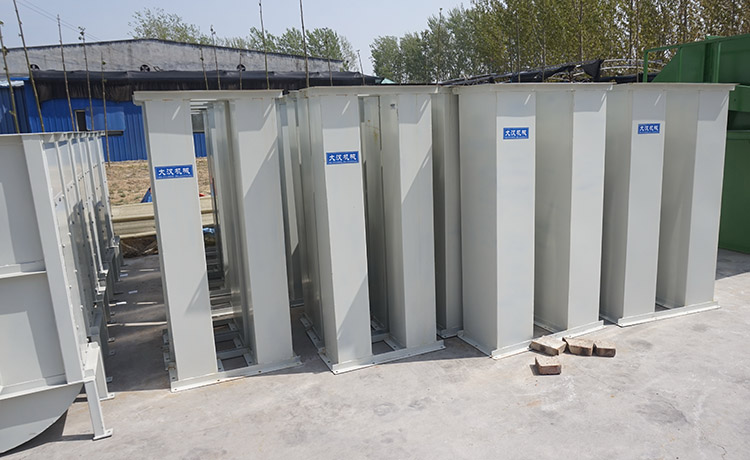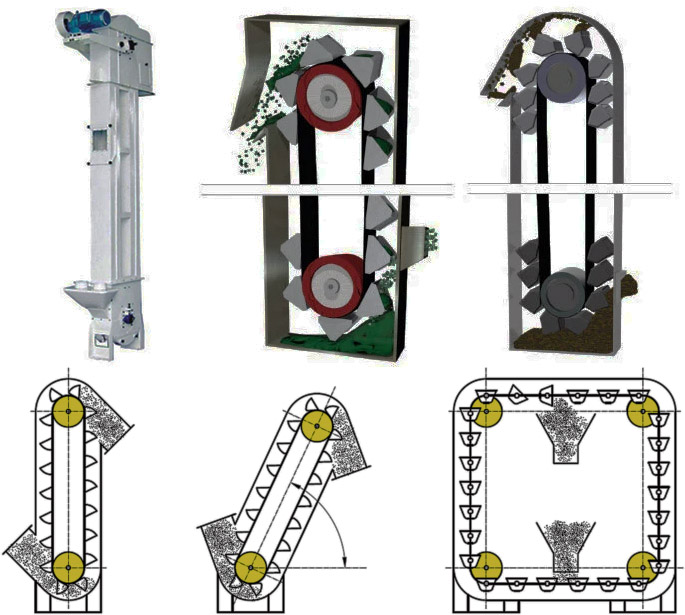How fast is a centrifugal bucket elevator?
Saturday March-22 2025 14:46:34
The speed of a centrifugal bucket elevator varies depending on factors such as model, product design, lifting height, and motor configuration. Here is an analysis of these factors:

1. Model and product design
Centrifugal bucket elevators typically have speeds between 1 and 4 meters per second (m/s), depending on the model and design.
| Model | TD160 | TD250 | TD315 | TD400 | ||||||||||||
| Hopper form | Q | h | zD | Sd | Q | h | zD | Sd | Q | h | zD | Sd | Q | h | zD | Sd |
| Delivery volume(m3/h) | 5.4 | 9.6 | 9.6 | 16 | 12 | 22 | 23 | 35 | 17 | 30 | 25 | 40 | 24 | 46 | 41 | 66 |
| Bucket width(mm) | 160 | 250 | 315 | 400 | ||||||||||||
| Dou Rong(L) | 0.5 | 0.9 | 4.2 | 1.9 | 1.3 | 2.2 | 3.0 | 4.6 | 2 | 3.6 | 3.8 | 5.8 | 3.1 | 5.6 | 5.9 | 9.4 |
| Bucket distance(mm) | 280 | 350 | 360 | 450 | 400 | 500 | 480 | 560 | ||||||||
| Bandwidth(mm) | 200 | 300 | 400 | 500 | ||||||||||||
| Bucket speed(m/s) | 1.4 | 1.6 | 1.6 | 1.8 | ||||||||||||
| Bulk material(mm) | 25 | 35 | 45 | 55 | ||||||||||||
| Model | TD500 | TD630 | TD160 | TD250 | TD350 | TD450 | ||||||||||
| Hopper form | Q | h | zD | Sd | h | zD | Sd | Q | S | Q | S | Q | S | Q | S | |
| Delivery volume(m3/h) | 38 | 70 | 58 | 92 | 85 | 89 | 142 | 4.7 | 8 | 18 | 22 | 25 | 42 | 50 | 72 | |
| Bucket width(mm) | 500 | 630 | 160 | 250 | 350 | 450 | ||||||||||
| Dou Rong(L) | 4.8 | 9 | 9.3 | 15 | 14 | 14.6 | 23.5 | 0.65 | 1.1 | 2.6 | 3.2 | 7 | 7.8 | 14.5 | 15 | |
| Bucket distance(mm) | 500 | 625 | 710 | 300 | 400 | 500 | 640 | |||||||||
| Bandwidth(mm) | 600 | 700 | 200 | 300 | 400 | 500 | ||||||||||
| Bucket speed(m/s) | 1.8 | 2 | 1 | 1.25 | 1.25 | 1.25 | ||||||||||
| Bulk material(mm) | 60 | 70 | 25 | 35 | 45 | 55 | ||||||||||
Small or light elevators (such as those used for grain or light materials) may have speeds closer to 1-2 m/s.
Large or heavy elevators (such as those used for heavy materials such as ore or cement) may have speeds of 3-4 m/s.
2. Lifting height
Lifting height has some impact on speed. Higher lifting heights may require more stable operating speeds (usually between 1.5-3 m/s) to ensure that materials do not spill during the lifting process.
Lower lifting heights can allow higher speeds (close to 4 m/s) to improve efficiency.

3. Motor configuration
The power and speed of the motor directly affect the operating speed of the elevator. High-power motors can support higher operating speeds.
The use of variable frequency motors can flexibly adjust the speed to suit different materials and processing requirements.
4. Material characteristics
For light, fluid materials such as grains, the speed can be higher (close to 3-4 m/s).
For heavy or sticky materials such as ore or wet sand, the speed is usually lower (1-2 m/s) to prevent clogging or wear.
5. Actual application cases
In the cement industry, the speed of centrifugal bucket elevators is usually 2-3 m/s to balance efficiency and equipment life.
In the grain processing industry, the speed may reach 3-4 m/s to increase the processing capacity.
The speed of the centrifugal bucket elevator is a comprehensive parameter that needs to be selected according to the specific model, lifting height, motor configuration and material characteristics. Generally speaking, the speed range is between 1 and 4 m/s. The specific value needs to refer to the technical manual of the equipment manufacturer or consult professionals.
